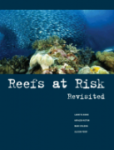-
Theoretical Revenue from Papyrus Harvest
The dataset results from WRI's calculation based on 1. NATIONAL FOREST AUTHORITY (NFA). 1996. Land Cover GIS Database. Kampala, Uganda: Government of Uganda. 2. KARANJA, F., L. EMERTON, J. MAFUMBO, AND W. KAKURU. 2001. Assessment of the Economic Value of Pallisa District Wetlands. Kampala,...
-
Reefs at Risk Revisited (Social Vulnerability Data)
This shapefile features the Exclusive Economic Zones (EEZs) for 108 coral reef countries and territories classified according to an index of their reef dependence, adaptive capacity, and social vulnerability. Results are presented as quartiles, with 27 countries/territories classified in each of...
-
Featured Aqueduct Global Flood Risk Maps
For the current scenario, we used hydrological data from 1960 through 1999 for generating flood inundations for 9 return periods, from 2-year flood to 1000-year flood, and 2010 GDP, population, and land use data for assessing flood impacts. For future projections, we used 5 GCMs (Global Climate...
-
Poverty data for Kenya, 1999
This data was used in Chapters 2 and 8 in Nature's Benefits in Kenya: An Atlas of Ecosystems and Human Well-Being in Kenya. Data are downloadable at www.planning.go.ke.
-
Datasheet for Technical Note: A Breakdown of Developed Countries’ Public Clim...
This dataset contains a breakdown of developed countries individual public contributions in public climate finance towards the $100 billion commitment between 2013-2018. This dataset was used in WRI’s technical note ‘A Breakdown of Developed Countries’ Public Climate Finance Contributions Towards...
-
Featured Dataset of Electric School Bus Adoption in the United States
Transitioning to electric school buses (ESBs) from traditional diesel-powered school buses can reduce students’ exposure to air pollution and decrease greenhouse gas emissions. School districts and private fleet operators around the United States are adopting electric school buses with increasing...
-
Índice de Desigualdad Urbana (Index of Urban Inequality)
The main objective of the UII methodology is to estimate the level of accessibility/proximity to urban equipment for different socioeconomic strata in cities. This allows to compare and identify inequality in the territorial distribution of development opportunities such as formal employment,...
FORMATS: -
City-scale climate hazards at 1.5°C, 2.0°C, and 3.0°C of global warming
Global climate models can provide valuable information to city decision makers for strategic planning, climate adaptation, risk management, and budgeting—but it can be difficult to glean from these models information that is directly suited to city scales and city problems. This dataset contains...
